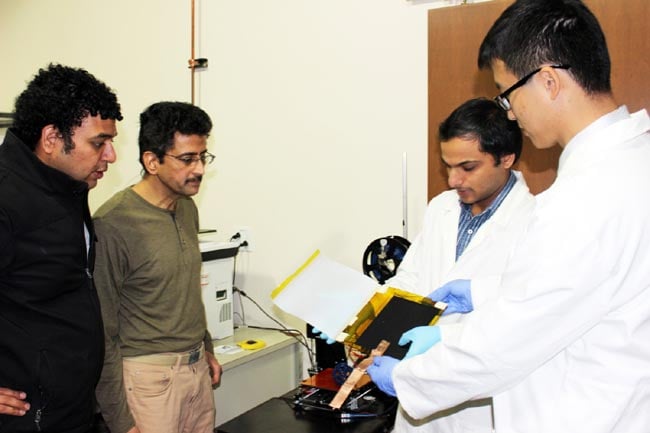
Researchers from Clemson’s Nanomaterial’s Institute (CNI) are one step closer to wirelessly powering the world using triboelectricity, a green energy source
Around one year ago, a physicist’s team at CNI invented the ultra-simple triboelectric nanogenerator (U-TENG). U-TENG made of plastic and tape is a small device which generates electricity from motion and vibration. By clapping or tapping feet it generated voltage that is further received by an external circuit and get stored in capacitor or battery until it gets charged.
About nine months later, the researchers published a paper in the journal Advanced Energy Materials, which stated that they made a wireless TENG or W-TENG. The W-TENG is also made by the same researchers of U-TENG. In W-TENG the plastic is replaced by graphene (a single layer of graphite lead) and polylactic acid (PLA). PLA is better at separating positive and negative charges but not in conducting electricity, due to this researchers paired it with graphene. Kapton tape which is the electricity grabbing material of U-TENG is swapped with Teflon in W-TENG.
After getting graphene by the process of “sonication” and PLA fiber and filled it into a 3-D printer, they successfully made the W-TENG.
“We use Teflon because it has a lot of fluorine groups that are highly electronegative, whereas the graphene-PLA is highly electropositive. That’s a good way to juxtapose and create high voltages,” said Ramakrishna Podila, corresponding author of the study and an assistant professor of physics at Clemson.
W-TENG is able to generate a maximum of 3,000 volts which is sufficient to power up 25 standard outlets or an LCD monitor. Due to having high voltage, W-TENG generates electric field around itself which can be sensed wirelessly. So, the wireless electricity can be stored in capacitor and batteries.
“It cannot only give you energy, but you can use the electric field also as an actuated remote. For example, you can tap the W-TENG and use its electric field as a ‘button’ to open your garage door, or you could activate a security system — all without a battery, passively and wirelessly,” said Sai Sunil Mallineni, the first author of the study and a Ph.D. student in physics and astronomy.
W-TENG has abundant applications like in outer space, the middle of the ocean or even the battlefield. “Several developing countries require a lot of energy, though we may not have access to batteries or power outlets in such settings, and there is a definite philanthropic use for the team’s invention,” Podila said. “The W-TENG could be one of the cleaner ways of generating energy in these areas.”
Researcher’s team is again guided by Mallineni, in the process of patenting the W-TENG through the Clemson University Research Foundation. Professor Apparao Rao, director of the Clemson Nanomaterials Institute, discussed with industrial partners to integrate the W-TENG into energy application.
Moreover, before starting industrial production, Podila said more research has to be done to swap Teflon with a more environmental friendly electronegative material. Yongchang Dong, another student of CNI, led the work on demonstration of MXene-TENG which was published in an article in the journal Nano Energy near November 2017. Herbert Behlow and Sriparna Bhattacharya from CNI also hand out to these studies.
Will the W-TENG make an impact in the realm of alternative, renewable energies? Rao said it will come down to economics.
“We can only take it so far as scientists; the economics need to work out in order for the W-TENG to be successful,” Rao said.

